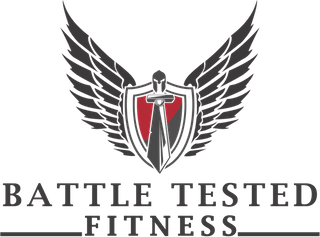How do you prime your body to overcome physical threats to your well being? What methods of training make the most sense to undertake in preparation of an emergency or traumatic incident? Is nutrition important for surviving emergencies?
1.Strength. In cases where we need to call on our “emergency” muscles it is important that we possess the ability to recruit muscle to overcome an external resistance.
2. Power. Once we develop a good strength foundation, we can now focus on explosive lifting and movements. A clean from the ground or a hanging clean will target fast pulling muscles in our legs, back, hips and arms. Push Presses and Split Jerks enhance the fast twitch muscle fibers in our respective pushing muscles. A clean & jerk involves lifting a weight from the ground explosively, catching it below the shoulders, and then exploding up with the legs and arms to hoist the weight overhead. Snatches with a barbell or one arm snatches with a kettlebell are also excellent movements for developing fast twitch capabilities.
3. Running Speed. Whether an emergency is a fire, earthquake, robbery, or shooting, sometimes the best course of action is to run, except in cases when it is best to shelter in place. When I speak of running, I am not talking about casually running on a treadmill at level 6, I am talking about sprinting. Developing speed takes time. One will injury him or herself if all of a sudden he or she starts running at full speed before training and conditioning the muscles to take on such a challenge. When running in the gym or outside, gradually add sprints into the run at – 60% – 70% – 80% . After a few weeks of conditioning increase the sprinting intensity.
4. Agility. Moving out of the way of incoming hazards – people, objects, cars, requires the body to move in various planes of motion quickly. The ability to start , stop, and change direction is a skill that needs to be practiced. Good ways to develop agility is by playing sports that require agility – tennis, basketball, volleyball, soccer, to name a few. In a gym setting, the use of speed ladders, cones, and medicine balls are great tools for improving agility and quickness.
5. Endurance. In most emergencies, cardiovascular endurance is not a necessity. There aren’t many cases where one has to run two miles to safety, but it never hurts to be prepared for occasions when we find ourselves in isolated regions and have to hike or walk to get help. The instances when we require extreme levels of endurance in emergency situations usually involve activities where we choose to put ourselves in danger – mountain biking, mountain climbing, open water sports.

Sorry, the comment form is closed at this time.